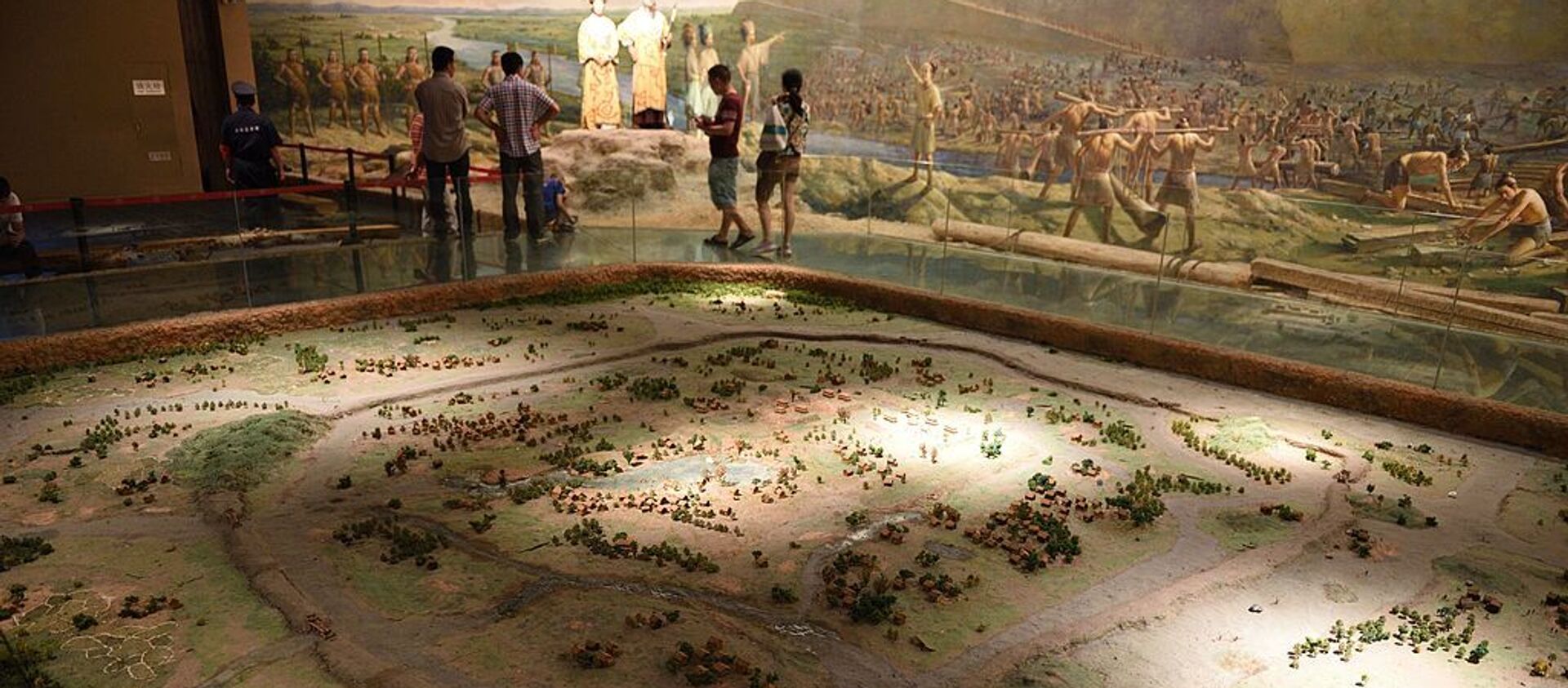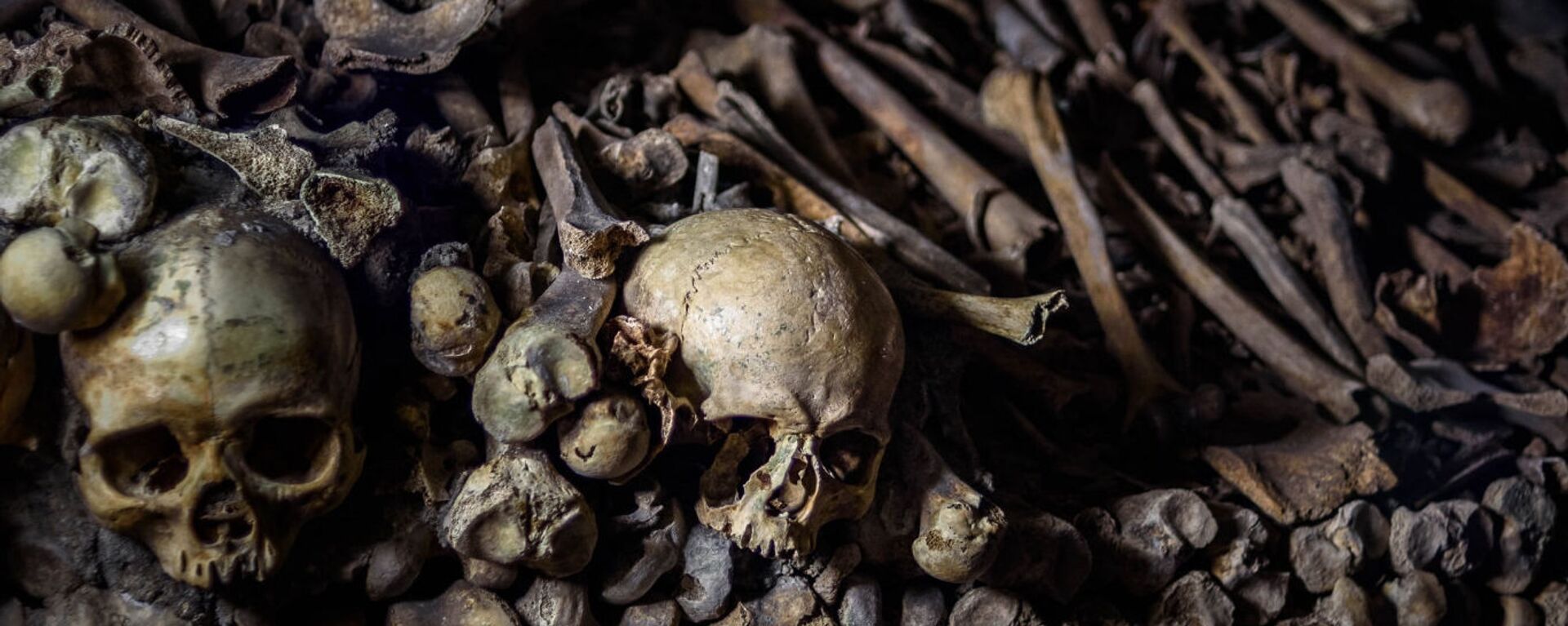https://sputnikglobe.com/20231216/mesa-verdes-petroglyphs-new-window-into-ancient-astronomical-practices-1115618531.html
Mesa Verde's Petroglyphs: New Window Into Ancient Astronomical Practices
Mesa Verde's Petroglyphs: New Window Into Ancient Astronomical Practices
Sputnik International
Polish archaeologists have discovered artifacts at Mesa Verde dating from 8,000 BC to the Spanish era. Their findings shed light on the evolution of Pueblo society, agriculture, and art, and illustrate the area's extensive pre-Columbian history and later influences from the Ute tribe and the Spanish.
2023-12-16T09:25+0000
2023-12-16T09:25+0000
2023-12-16T09:25+0000
beyond politics
mesa
poland
north america
university of houston
jagiellonian university
colorado
https://cdn1.img.sputnikglobe.com/img/103696/14/1036961432_0:249:3448:2189_1920x0_80_0_0_d38fe5e43efbc1514a19d4764edfaa03.jpg
In the US state of Colorado, on the Mesa Verde plateau, a team of archaeologists from Jagiellonian University in Poland has made remarkable discoveries. Their focus has been on Castle Rock Pueblo, a settlement complex of the ancient Pueblo, the ancestors of some North American Indian peoples.Early human activity at Mesa Verde, dating back to 8,000 BC, marks the beginning of the Archaic period. Although artifacts from this era are scarce, a significant evolution in the ancient Pueblo culture, starting around 500-750 AD, indicates substantial advancements in their societal structure.The Pueblo people of this era were known for their skillfully built multi-storied structures made from sandstone and timber, and were pioneers in crafting distinct black and white pottery. A revolution in farming methods led to a richer and more varied agricultural output, pivotal in shaping one of North America's most complex pre-Columbian societies.In 2023, Professor Radoslaw Palonka's team unearthed a collection of ancient murals and engravings on the Mesa Verde plateau, dating from the third century AD. These artifacts include depictions of warriors and shamans, shedding light on the Pueblo lifestyle. The primary artworks from the 12th to 13th centuries feature intricate geometric designs, signifying the height of the Pueblo civilization.Between the 1400s and 1600s, during the Ute tribe's residency in the region, cave walls were richly decorated with extensive hunting depictions featuring bison and deer. Following the arrival of the Spanish, illustrations of horses, an animal new to the indigenous people of North America, emerged, signifying a notable cultural change.In the remote and higher parts of the canyons, leveraging local elders' guidance, Professor Palonka's team made an astonishing discovery. They encountered a series of previously unseen petroglyphs situated about 800 meters above the rock settlements. These petroglyphs, mainly spirals measuring up to a meter in diameter and extending over four kilometers, offer a novel understanding of Mesa Verde's rich cultural heritage.In collaboration with the University of Houston, the Polish archaeological team employed light detection and ranging technology to map the petroglyphs, discovering that they form an interconnected canvas. This led to the conclusion that the ancient Pueblo used these petroglyphs for astronomical purposes, marking significant calendar events like solstices and equinoxes, the first evidence of their knowledge of astronomy.The research team's findings of "astronomical" petroglyphs offer a new perspective on the ancient Pueblo civilization. They infer a higher 13th century population, hinting at a more sophisticated scientific understanding and potentially intricate religious practices.
https://sputnikglobe.com/20190719/archaeological-ruins-of-liangzhu-ancient-city-testament-to-chinas-5000-year-civilization--1076291703.html
https://sputnikglobe.com/20220807/attacks-of-deadly-extinct-pathogens-possibly-wiped-out-ancient-civilizations-claims-study-1099352763.html
mesa
poland
north america
Sputnik International
feedback@sputniknews.com
+74956456601
MIA „Rossiya Segodnya“
2023
Chimauchem Nwosu
https://cdn1.img.sputnikglobe.com/img/07e7/09/01/1113046371_0:99:1536:1635_100x100_80_0_0_9c5c627283eca931c39fe4852bbb301c.jpg
Chimauchem Nwosu
https://cdn1.img.sputnikglobe.com/img/07e7/09/01/1113046371_0:99:1536:1635_100x100_80_0_0_9c5c627283eca931c39fe4852bbb301c.jpg
News
en_EN
Sputnik International
feedback@sputniknews.com
+74956456601
MIA „Rossiya Segodnya“
Sputnik International
feedback@sputniknews.com
+74956456601
MIA „Rossiya Segodnya“
Chimauchem Nwosu
https://cdn1.img.sputnikglobe.com/img/07e7/09/01/1113046371_0:99:1536:1635_100x100_80_0_0_9c5c627283eca931c39fe4852bbb301c.jpg
mesa verde, castle rock pueblo, ancient pueblos, north american indian peoples, archaic period, pueblo culture, black and white pottery, pueblo farming methods, pre-columbian societies, geometric designs, ute tribe, hunting depictions, bison, deer, spanish, horses, petroglyphs, light detection and ranging technology, astronomical purposes, solstices, equinoxes, astronomical knowledge, pueblo civilization.
mesa verde, castle rock pueblo, ancient pueblos, north american indian peoples, archaic period, pueblo culture, black and white pottery, pueblo farming methods, pre-columbian societies, geometric designs, ute tribe, hunting depictions, bison, deer, spanish, horses, petroglyphs, light detection and ranging technology, astronomical purposes, solstices, equinoxes, astronomical knowledge, pueblo civilization.
Mesa Verde's Petroglyphs: New Window Into Ancient Astronomical Practices
Polish archaeologists have discovered artifacts at Mesa Verde dating from 8,000 BC to the Spanish era. Their findings shed light on the evolution of Pueblo society, agriculture, and art, and illustrate the area's extensive pre-Columbian history and later influences from the Ute tribe and the Spanish.
In the US state of Colorado, on the Mesa Verde plateau, a team of archaeologists from Jagiellonian University in Poland has made remarkable discoveries. Their focus has been on Castle Rock Pueblo, a settlement complex of the ancient Pueblo, the ancestors of some North American Indian peoples.
Early human activity at Mesa Verde, dating back to 8,000 BC, marks the beginning of the Archaic period. Although artifacts from this era are scarce, a significant evolution in the ancient Pueblo culture, starting around 500-750 AD, indicates substantial advancements in their societal structure.
The Pueblo people of this era were known for their skillfully built multi-storied structures made from sandstone and timber, and were pioneers in crafting distinct black and white pottery. A revolution in farming methods led to a richer and more varied agricultural output, pivotal in shaping one of North America's most complex pre-Columbian societies.
In 2023, Professor Radoslaw Palonka's team unearthed a collection of ancient murals and engravings on the Mesa Verde plateau, dating from the third century AD. These artifacts include depictions of warriors and shamans, shedding light on the Pueblo lifestyle. The primary artworks from the 12th to 13th centuries feature intricate geometric designs, signifying the height of the Pueblo civilization.
Between the 1400s and 1600s, during the Ute tribe's residency in the region, cave walls were richly decorated with extensive hunting depictions featuring bison and deer. Following the arrival of the Spanish, illustrations of horses, an animal new to the indigenous people of North America, emerged, signifying a notable cultural change.
In the remote and higher parts of the canyons, leveraging local elders' guidance, Professor Palonka's team made an astonishing discovery. They encountered a series of previously unseen petroglyphs situated about 800 meters above the rock settlements. These petroglyphs, mainly spirals measuring up to a meter in diameter and extending over four kilometers, offer a novel understanding of Mesa Verde's rich cultural heritage.
In collaboration with the University of Houston, the Polish archaeological team employed light detection and ranging technology to map the petroglyphs, discovering that they form an interconnected canvas. This led to the conclusion that the ancient Pueblo used these petroglyphs for astronomical purposes, marking significant calendar events like solstices and equinoxes, the first evidence of their knowledge of astronomy.
The research team's findings of "astronomical" petroglyphs offer a new perspective on the ancient Pueblo civilization. They infer a higher 13th century population, hinting at a more sophisticated scientific understanding and potentially intricate religious practices.





